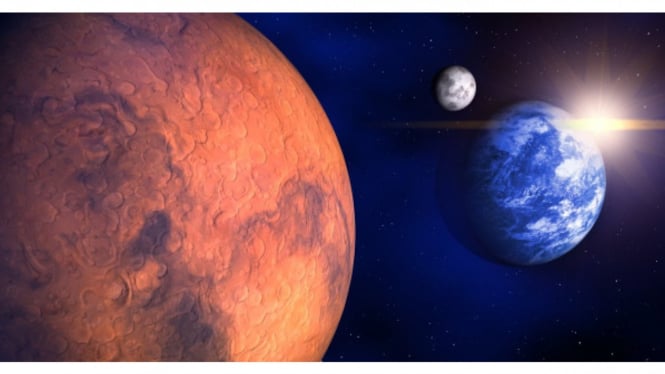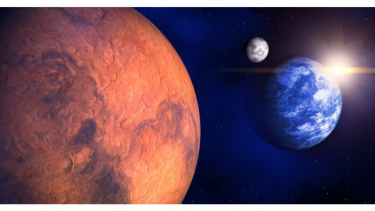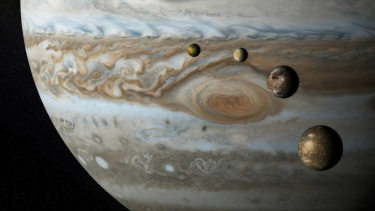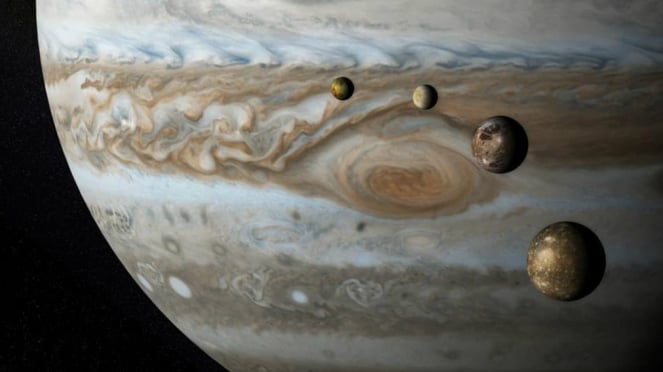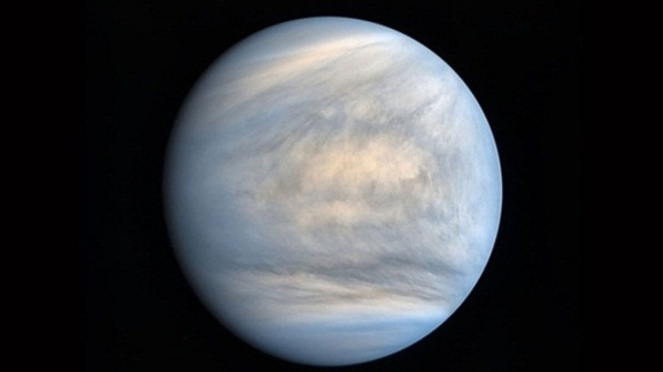- Tech Explorist
VIVA – About 5 billion years ago, our Sun began to turn hydrogen into helium at its core to become a fully-fledged star. This baby Sun was surrounded by a disk of material – mostly hydrogen from the nebula it formed, but also more complex molecules.
Interactions in this disk produced icy and dusty grains that grew and interacted with others. Gassy chunks of this disk might have separated from the rest, too. And, from this stirring chaos, planets emerged.
The first to form, possibly within the first 3 million years of the Solar System, is Jupiter. That’s how it became so big and strong, much bigger than any other planet. Jupiter is so big it has a mass of 318 piles of earth.
In fact, the barycenter between Jupiter and the Sun, the point around which Jupiter orbits the Sun is not the Sun's center, but just outside its surface. So Jupiter doesn’t even precisely orbit the Sun.
Planet Jupiter dengan empat Bulan sebagai satelitnya.
- Instagram/@simply_telescope
Behind Jupiter, Saturn too began to grow followed by Neptune and Uranus. Although by the time the latter two were well on their way,
Jupiter and Saturn had already swept up a large portion of the gas in the outer Solar System. The Jovian system is certainly where things can grow old. Although it has active moons like Europa, Io, and Ganymede, its moon Callisto has the oldest surface in the Solar System.
During this time, in the inner Solar System, four rocky planets and a dwarf planet were emerging among the spread-out rubble. The rocky protoplanet took a long longer to emerge, perhaps closer to 100 million years, as it depended on collisions between rocky bodies.
Mars may have reached its present size quickly, quicker than Earth and Venus anyway, but the jury is out on the exact timing.
Ilustrasi venus.
- Pixabay
Usually, solid astronomical bodies' ages are estimated using the number of craters on their surface, but celestial objects where the surface changes make it complicated.
So, while it makes sense for Jupiter to be the oldest based on formation models, it is not as easy to find the youngest.
There’s an alternative approach that we could take and consider the planets' need to have their bulk mass in place as well as having properties consistent with what we see today. Then the context between the youngest becomes a two-horse race between Earth and Uranus.
So, even though Jupiter is considered to be the oldest based on formation models, it is not easy to find the youngest.
There are alternative approaches we can take and consider for planets that have large masses and properties consistent with what we see today.
Then the context between the youngest becomes a race of two worlds, between Earth and Uranus. The reason why this unusual world emerged as the youngest has to do with the fact that both experienced a major collision.
The early Earth likely collided with Theia, a Mars-sized planetoid, and it was from that dramatic event that the Moon formed. It happened about 4.5 billion years ago and it took about 200 million years for Earth's natural satellite to solidify.
Whereas the shaken Earth took more time to become what it is today, with the formation of oceans and plate tectonics, the latter of which probably happened 3.6 billion years ago.
Between 3 and 4 billion years ago, Uranus collided with an Earth-sized world that messed up its interior, made it spin sideways, and created the strongest magnetic field.
So, when it comes to which planet is the youngest, we need to define it precisely to reach a solid conclusion. Not to mention, the definition of a planet can easily become limited and controversial, like the tiny Pluto.

